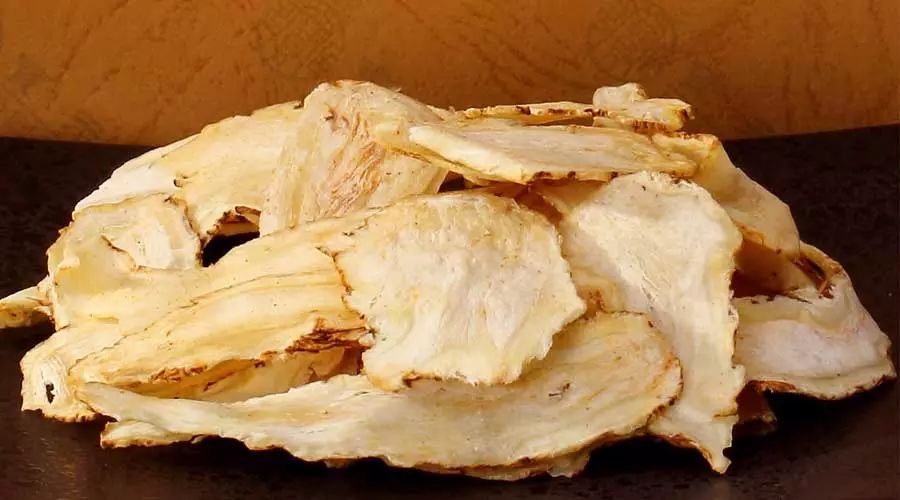
Author: Wu Daiquan
Angelica Sinensis (Dang Gui) is the dried root of the plant from the Umbelliferae family. It has a sweet and pungent taste and a warm nature. It contains nutrients such as Vitamin A, Vitamin B12, Vitamin E, and essential amino acids.
Angelica Sinensis can nourish the blood, invigorate the blood, clear the blood, promote tissue regeneration, moisten the intestines and stomach, regulate menstruation, and enhance skin complexion. It can also boost metabolism and endocrine function, preventing and treating conditions such as facial dryness, flaking, and itching, resulting in smooth and delicate skin. Additionally, it enhances gastrointestinal absorption and stimulates the ovaries, providing certain dietary therapeutic effects for delaying aging in women. It is one of the most frequently used Chinese herbs in clinical practice, often referred to as “the star of the herbal world,” and is well-known among the public, with many folk recipes and remedies involving Angelica Sinensis.
The reason Angelica Sinensis has become a “popular star” in the family of Chinese herbs is due to its valuable medicinal properties. Modern pharmacological studies have confirmed that Angelica Sinensis has significant effects on the immune system and hematopoietic system, and it also shows good efficacy in anti-inflammatory and anti-tumor applications.
As the name suggests
“Chinese Angelica is the best in the world, and Min County Angelica is the best in China.” The Angelica Sinensis produced in Min County, Gansu Province, has a large yield and high quality, making it popular domestically and renowned internationally. Traditional Chinese medicine emphasizes the use of authentic medicinal materials, hence prescriptions often specify “Min Gui,” while Min County was historically known as “Qinzhou,” leading to the alternative name “Qin Gui” in TCM prescriptions.
Why is it called Angelica Sinensis? The term “Dang Gui” means “should return,” as expressed in a Tang dynasty poem: “Hemp is easy to plant, but no one plants it; it is the time to return, yet I do not return.” During the Three Kingdoms period, General Jiang Wei’s mother missed her son and sent him Angelica Sinensis to express her eagerness for his return.
There is a riddle in folk culture: “At the end of May and the beginning of June, a beautiful woman buys paper to paste the windows; her husband has been away for three years, and she receives a letter with no words.” The answer is four types of Chinese herbs: Ban Xia, Fang Feng, Angelica Sinensis, and Bai Zhi. The line about the husband being away for three years refers to Angelica Sinensis, indicating he should return quickly. The Ming dynasty pharmacologist Li Shizhen also explained the origin of the name Angelica Sinensis based on its efficacy in regulating menstruation. In his work, “Compendium of Materia Medica,” he wrote: “In ancient times, marrying a wife was for the continuation of descendants; Angelica Sinensis regulates the blood and is a necessary medicine for women, hence the name ‘Dang Gui.’”
Strengthening the Body and Attacking Pathogens for Remarkable Effects
Angelica Sinensis has been used in medicine for a long time; it was listed as a “middle-grade” herb in the “Shennong Bencao Jing” for its ability to both nourish and attack, supporting the body and treating diseases.
The primary effect of Angelica Sinensis is to nourish the blood. It is most suitable for symptoms caused by blood deficiency, such as dizziness, blurred vision, palpitations, fatigue, pale complexion, and weak pulse. The famous Angelica Sinensis Blood Nourishing Decoction is composed of Angelica Sinensis and Astragalus. Adding Dang Shen and red dates enhances the effect of nourishing Qi and blood.
Angelica Sinensis is also a crucial herb in gynecology, as it not only nourishes the blood but also invigorates it, making it ideal for women with irregular menstruation. The Four Substance Decoction, composed of Angelica Sinensis, Rehmannia, White Peony, and Chuanxiong, is a fundamental formula for regulating menstruation. For abdominal pain during menstruation, it can be combined with Xiang Fu and Yan Hu Suo; for amenorrhea, it can be combined with Tao Ren and Hong Hua.
Angelica Sinensis is also suitable for pain-related conditions, as it has the effect of warming the meridians and alleviating pain. It can be used for cold abdominal pain, rheumatic joint pain, or pain due to traumatic injuries and blood stasis.
Angelica Sinensis is often used for abscesses and sores, as it invigorates the blood and can reduce swelling, relieve pain, and promote tissue regeneration. The well-known formula for treating sores, Xian Fang Huo Ming Yin, includes Angelica Sinensis along with Chi Shao, Jin Yin Hua, and other herbs.
Angelica Sinensis is also beneficial for constipation caused by blood deficiency and dry intestines, as it has the effect of nourishing blood and moistening the intestines, often used in combination with Rou Cong Rong and Huo Ma Ren.
Many nourishing Qi and blood recipes also include Angelica Sinensis as an important ingredient, such as Angelica Sinensis and Ginger Lamb Soup, and medicinal steamed chicken.
Special Reminders
What should be noted when consuming Angelica Sinensis?
Angelica Sinensis is categorized into Angelica Sinensis head, tail, and whole root. Generally, it is used raw. For blood nourishment, the head is preferred; for invigorating blood, the tail is used; and for harmonizing blood (nourishing and invigorating), the whole root is utilized.
Who should avoid Angelica Sinensis?
Those with excessive menstruation, a tendency to bleed, Yin deficiency with internal heat, or loose stools should avoid consuming Angelica Sinensis.
How to use Angelica Sinensis?
Angelica Sinensis can be used in clinical TCM prescriptions, in medicinal dishes, or ground into powder for consumption. The powdered form is typically taken once a day, with a small half spoon, mixed with water or added to porridge and rice. It can also be encapsulated for convenience.

Long press the image for 3 seconds to scan the QR code and follow us
If you like it, please give us a thumbs up! ↙

